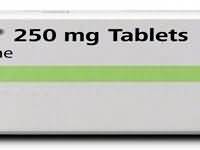CLINICAL USE
Malaria prophylaxis and treatment
DOSE IN NORMAL RENAL FUNCTION
Prophylaxis: 250 mg weekly Treatment: Non-immune patients 20–25 mg/kg in —2–3 divided doses; maximum 1.5 gPartially-immune patients 15 mg/kg in —2–3 divided doses
PHARMACOKINETICS
DOSE IN RENAL IMPAIRMENT
GFR (mL/MIN)
DOSE IN PATIENTS UNDERGOING RENAL REPLACEMENT THERAPIES
IMPORTANT DRUG INTERACTIONS
Potentially hazardous interactions with other drugs
ADMINISTRATION
Reconstition
–
Route
Oral
Rate of Administration
–
Comments
–
OTHER INFORMATION
Start prophylaxis 1–3 weeks before arriving in malarial area and continue for 4 weeks after leaving the malarial areaIncreased risk of convulsions in patients with epilepsy.

